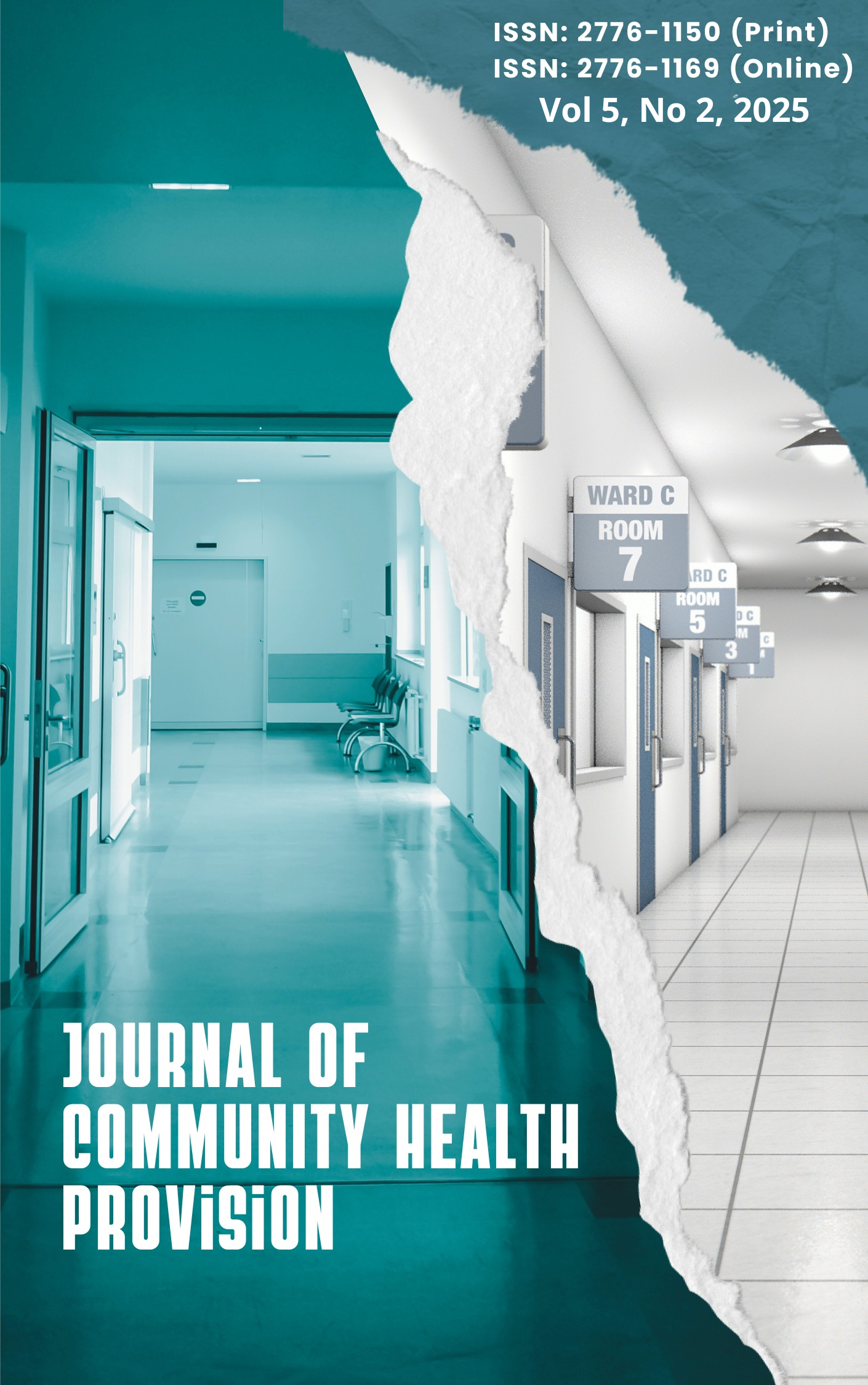Open Ocular Injury with Corneal-Scleral Laceration and Lens Loss Due to Sharp Trauma in a Pediatric Patient
Main Article Content
Abstract
Article Details

This work is licensed under a Creative Commons Attribution-ShareAlike 4.0 International License.
References
Aramă, V. (2020). Topical antibiotic therapy in eye infections-myths and certainties in the era of bacterial resistance to antibiotics. Romanian journal of ophthalmology, 64(3), 245.
Atik, S. S., Ugurlu, S., & Egrilmez, E. D. (2018). Open globe injury: demographic and clinical features. Journal of Craniofacial Surgery, 29(3), 628-631. https://doi.org/10.1097/SCS.0000000000004156
Batur, M., Seven, E., Esmer, O., Akaltun, M. N., Yasar, T., & Cinal, A. (2016). Epidemiology of adult open globe injury. Journal of Craniofacial Surgery, 27(7), 1636-1641. https://doi.org/10.1097/SCS.0000000000003001
Baudouin, C., Aragona, P., Van Setten, G., Rolando, M., Irkeç, M., del Castillo, J. B., ... & Bonini, S. (2014). Diagnosing the severity of dry eye: a clear and practical algorithm. British Journal of Ophthalmology, 98(9), 1168-1176. https://doi.org/10.1136/bjophthalmol-2013-304619
Beshay, N., Keay, L., Dunn, H., Kamalden, T. A., Hoskin, A. K., & Watson, S. L. (2017). The epidemiology of open globe injuries presenting to a tertiary referral eye hospital in Australia. Injury, 48(7), 1348-1354. https://doi.org/10.1016/j.injury.2017.04.035
Brophy, M., Sinclair, S. A., Hostetler, S. G., & Xiang, H. (2006). Pediatric eye injury–related hospitalizations in the United States. Pediatrics, 117(6), e1263-e1271. https://doi.org/10.1542/peds.2005-1950
Chen, T., Kistamgari, S., & Smith, G. A. (2023). Consumer product-related pediatric eye injuries treated in United States emergency departments. Ophthalmic epidemiology, 30(4), 424-433. https://doi.org/10.1080/09286586.2022.2129696
Dang, D. H., Riaz, K. M., & Karamichos, D. (2022). Treatment of non-infectious corneal injury: review of diagnostic agents, therapeutic medications, and future targets. Drugs, 82(2), 145-167. https://doi.org/10.1007/s40265-021-01660-5
Dua, H. S., Ting, D. S. J., Al Saadi, A., & Said, D. G. (2020). Chemical eye injury: pathophysiology, assessment and management. Eye, 34(11), 2001-2019. https://doi.org/10.1038/s41433-020-1026-6
Hashem, E. M., Ismael, M. A. E. F., Hassan, R. A., & Ahmed, W. R. (2025). Effect of high-quality nursing care on postoperative complications and quality of life for patients undergoing common bile duct exploration. BMC nursing, 24(1), 524. https://doi.org/10.1186/s12912-025-03119-4
Li, X., Zarbin, M. A., & Bhagat, N. (2015). Pediatric open globe injury: a review of the literature. Journal of emergencies, trauma, and shock, 8(4), 216-223. https://doi.org/10.4103/0974-2700.166663
Liang, Y., Liang, S., Liu, X., Liu, D., & Duan, J. (2021). Intraocular foreign bodies: clinical characteristics and factors affecting visual outcome. Journal of Ophthalmology, 2021(1), 9933403. https://doi.org/10.1155/2021/9933403
Mir, T. A., Canner, J. K., Zafar, S., Srikumaran, D., Friedman, D. S., & Woreta, F. A. (2020). Characteristics of open globe injuries in the United States from 2006 to 2014. JAMA ophthalmology, 138(3), 268-275. https://doi.org/10.1001/jamaophthalmol.2019.5823
Ogilvie, M. P., Pereira, B. M., Ryan, M. L., & Panthaki, Z. J. (2010). Emergency department assessment and management of facial trauma from war-related injuries. Journal of Craniofacial Surgery, 21(4), 1002-1008. https://doi.org/10.1097/SCS.0b013e3181e1e7e0
Palmer, J. S., Hough, R. L., West, H. M., & Avery, L. M. (2019). A review of the abundance, behaviour and detection of clostridial pathogens in agricultural soils. European journal of soil science, 70(4), 911-929. https://doi.org/10.1111/ejss.12847
Pargament, J. M., Armenia, J., & Nerad, J. A. (2015). Physical and chemical injuries to eyes and eyelids. Clinics in dermatology, 33(2), 234-237. https://doi.org/10.1016/j.clindermatol.2014.10.015
Pollard, K. A., Xiang, H., & Smith, G. A. (2012). Pediatric eye injuries treated in US emergency departments, 1990-2009. Clinical pediatrics, 51(4), 374-381. https://doi.org/10.1177/0009922811427583
Santamaría, A., Pérez, S., De Luis, B., Orive, A., Feijóo, R., & Etxebarria, J. (2023). Clinical characteristics and prognostic factors of open globe injuries in a North Spain population: a 10-year review. Eye, 37(10), 2101-2108. https://doi.org/10.1038/s41433-022-02297-8
Scott, R. (2011). The injured eye. Philosophical Transactions of the Royal Society B: Biological Sciences, 366(1562), 251-260. https://doi.org/10.1098/rstb.2010.0234
Shah, M., Shah, S., Agrawal, R., & Patel, K. (2018). Validation of a modified Birmingham eye trauma terminology classification for mechanical eye injuries. Trauma, 20(3), 217-220. https://doi.org/10.1177/1460408617715488
Tran, T. M., Duong, H., Bonnet, C., Kashanchi, A., Buckshey, A., & Aldave, A. J. (2020). Corneal blindness in Asia: a systematic review and meta-analysis to identify challenges and opportunities. Cornea, 39(9), 1196-1205. https://doi.org/10.1097/ICO.0000000000002374
Wang, D., & Deobhakta, A. (2020). Open Globe Injury: Assessment and Preoperative Management. Eyenet Magazine, 31-3.
Watanachai, N., Choovuthayakorn, J., Nanegrungsunk, O., Phinyo, P., Chokesuwattanaskul, S., Tanasombatkul, K., ... & Patikulsila, D. (2023). Intraocular foreign body: Characteristics, visual outcomes, and predictive values of ocular trauma score. Heliyon, 9(10).
Yuan, M., & Lu, Q. (2022). Trends and disparities in the incidence of intraocular foreign bodies 1990–2019: A global analysis. Frontiers in Public Health, 10, 858455. https://doi.org/10.3389/fpubh.2022.858455
Zhou, Y., DiSclafani, M., Jeang, L., & Shah, A. A. (2022). Open globe injuries: review of evaluation, management, and surgical pearls. Clinical Ophthalmology (Auckland, NZ), 16, 2545. https://doi.org/10.2147/OPTH.S372011

